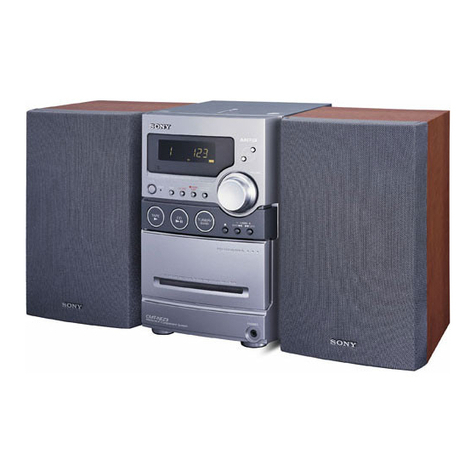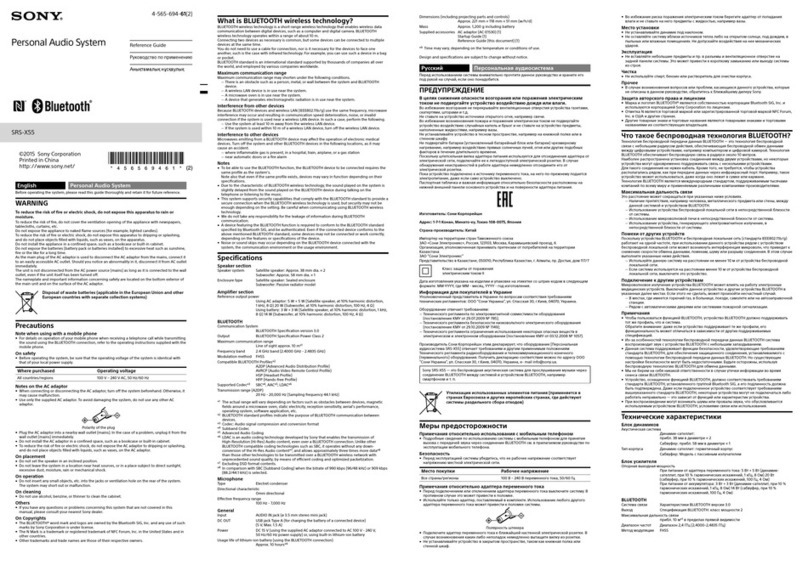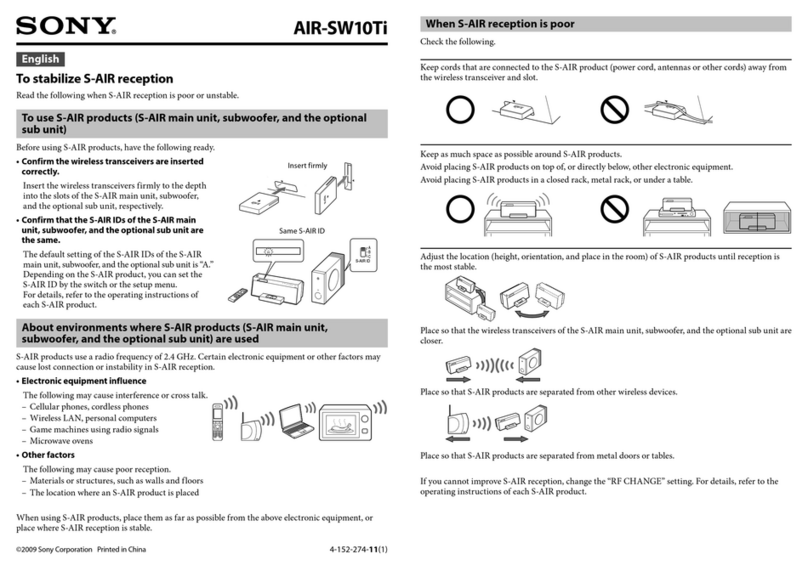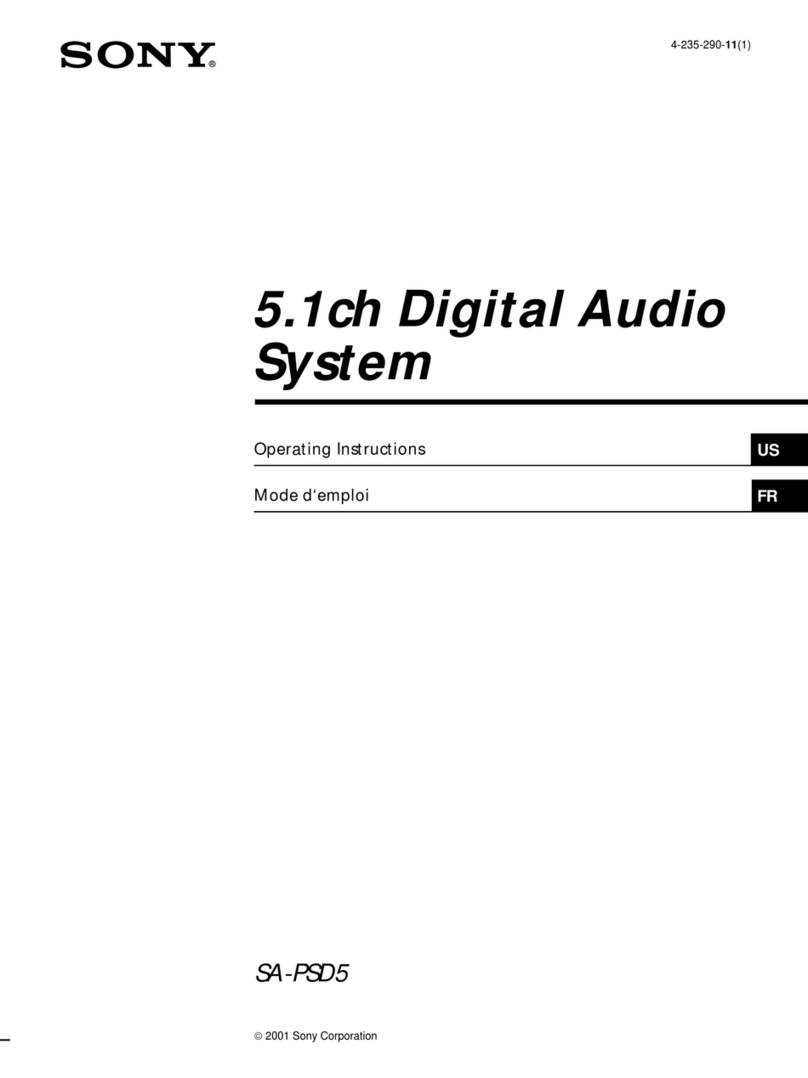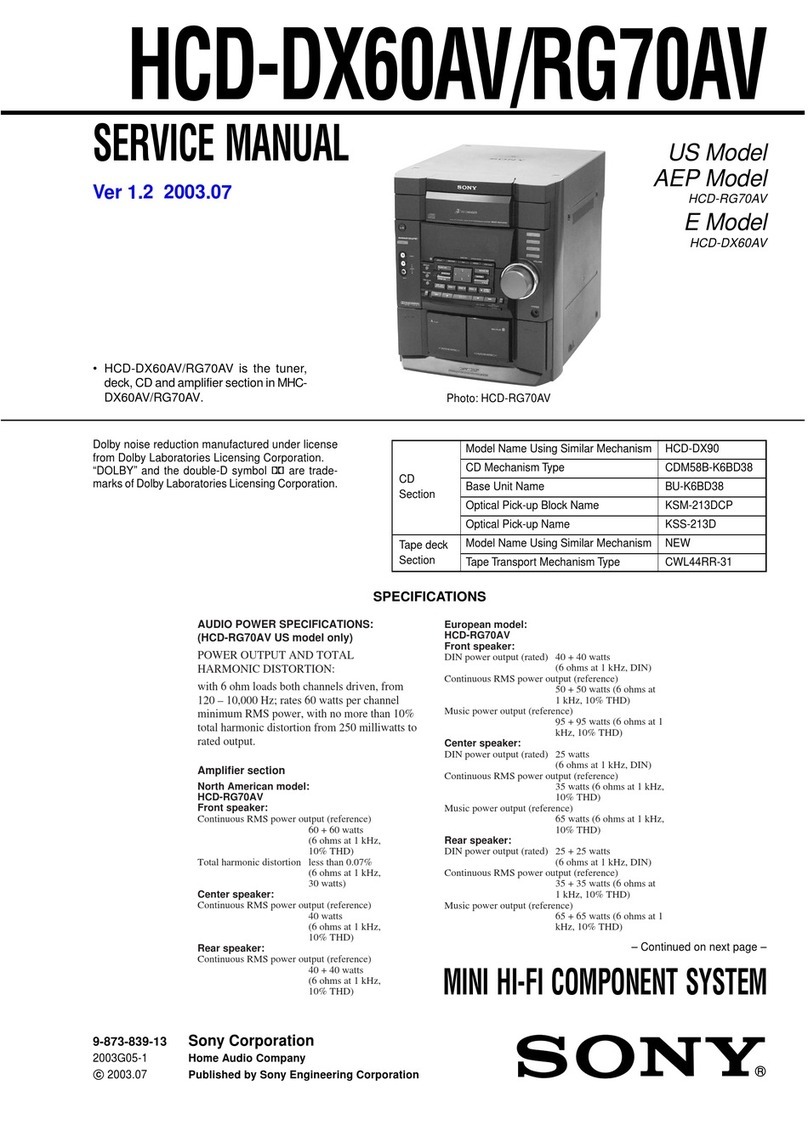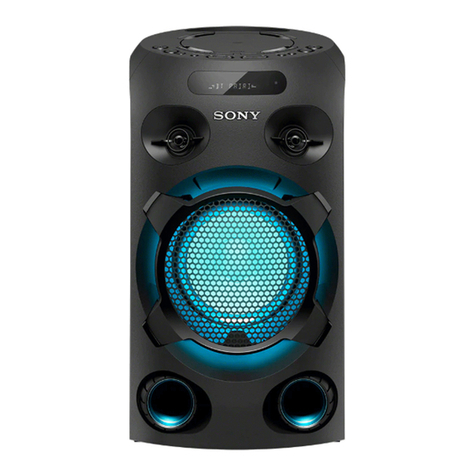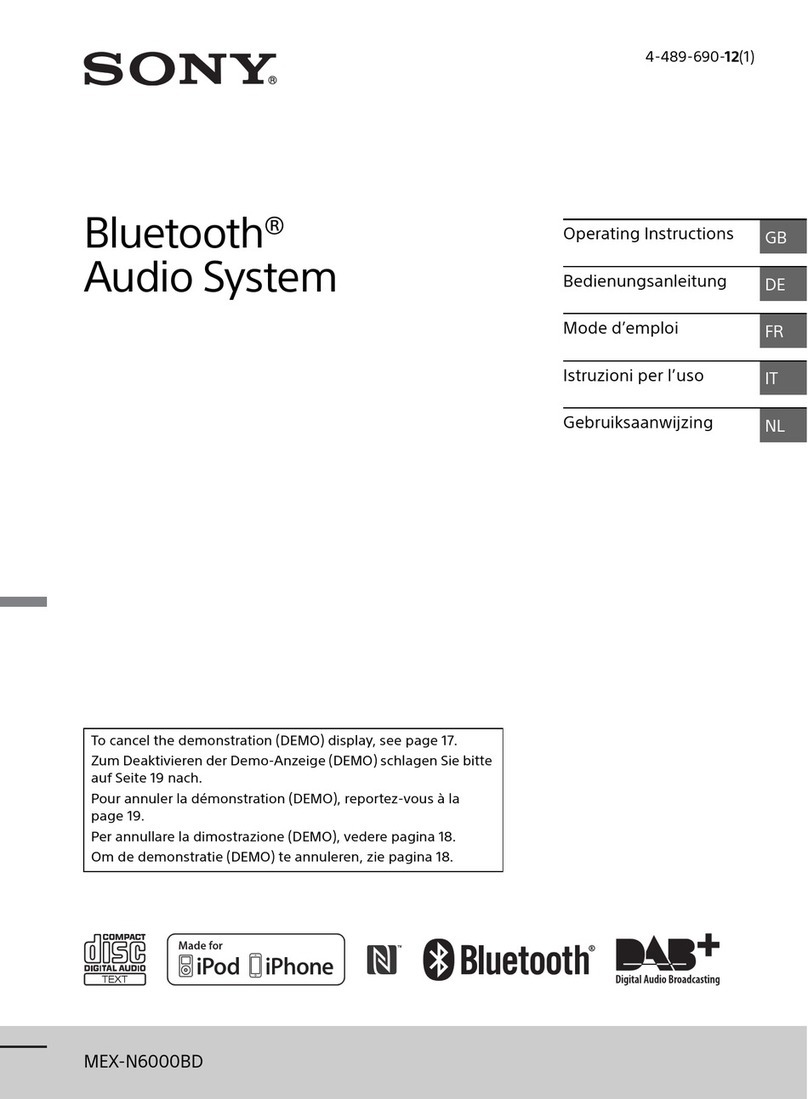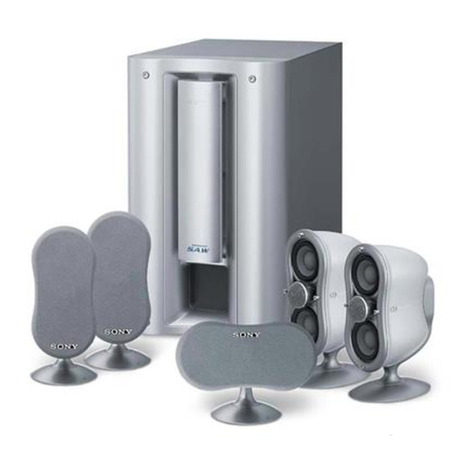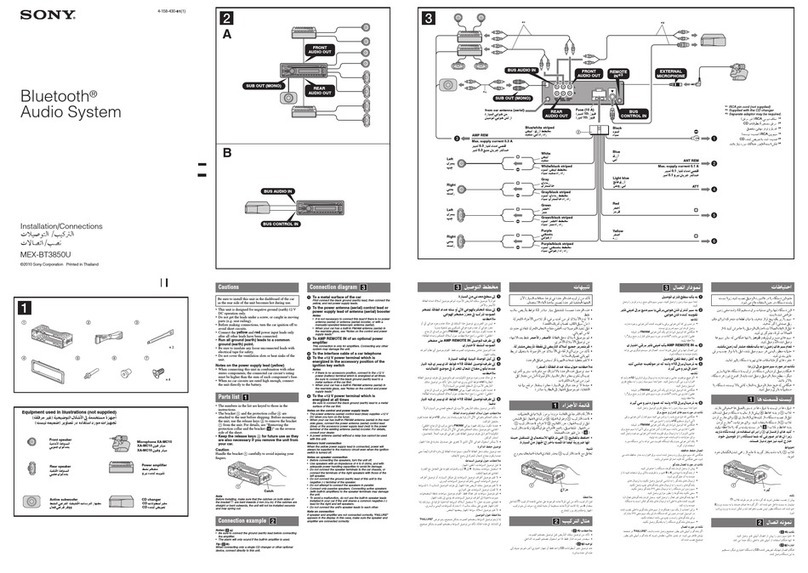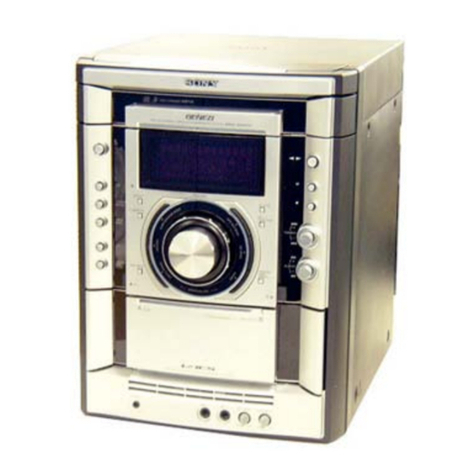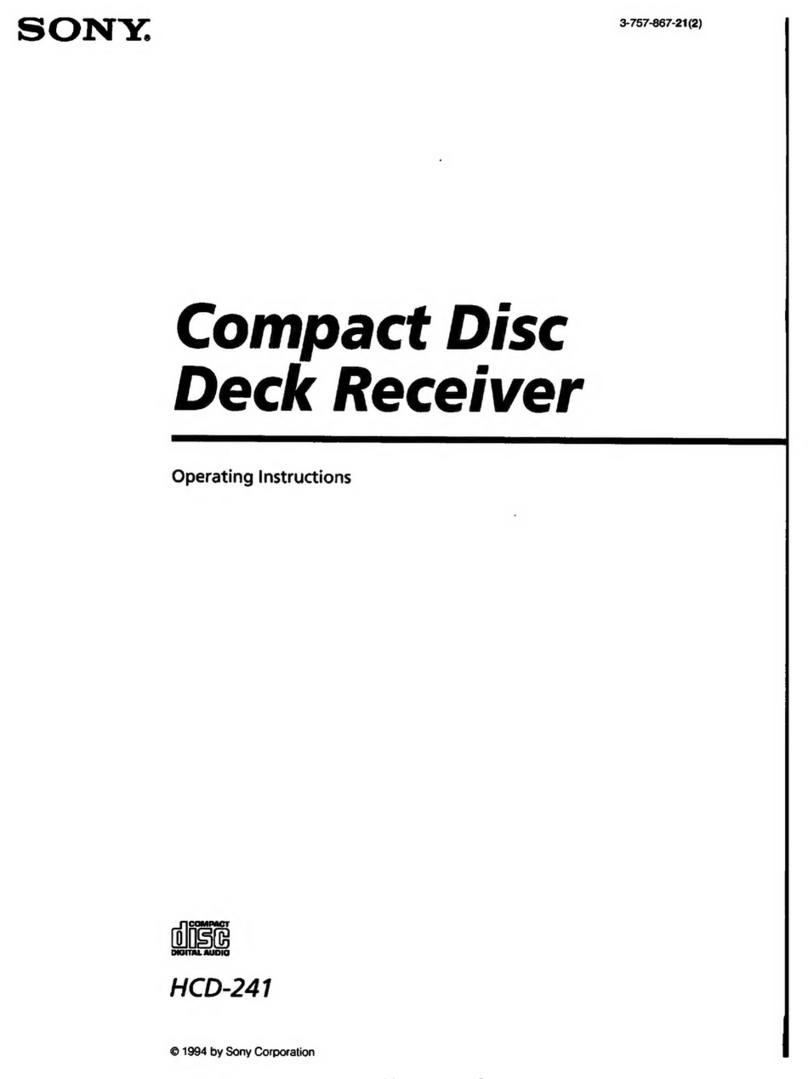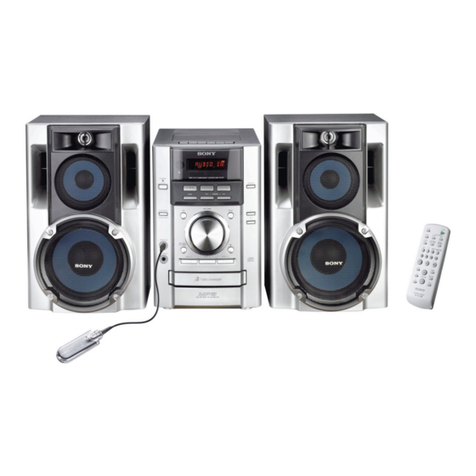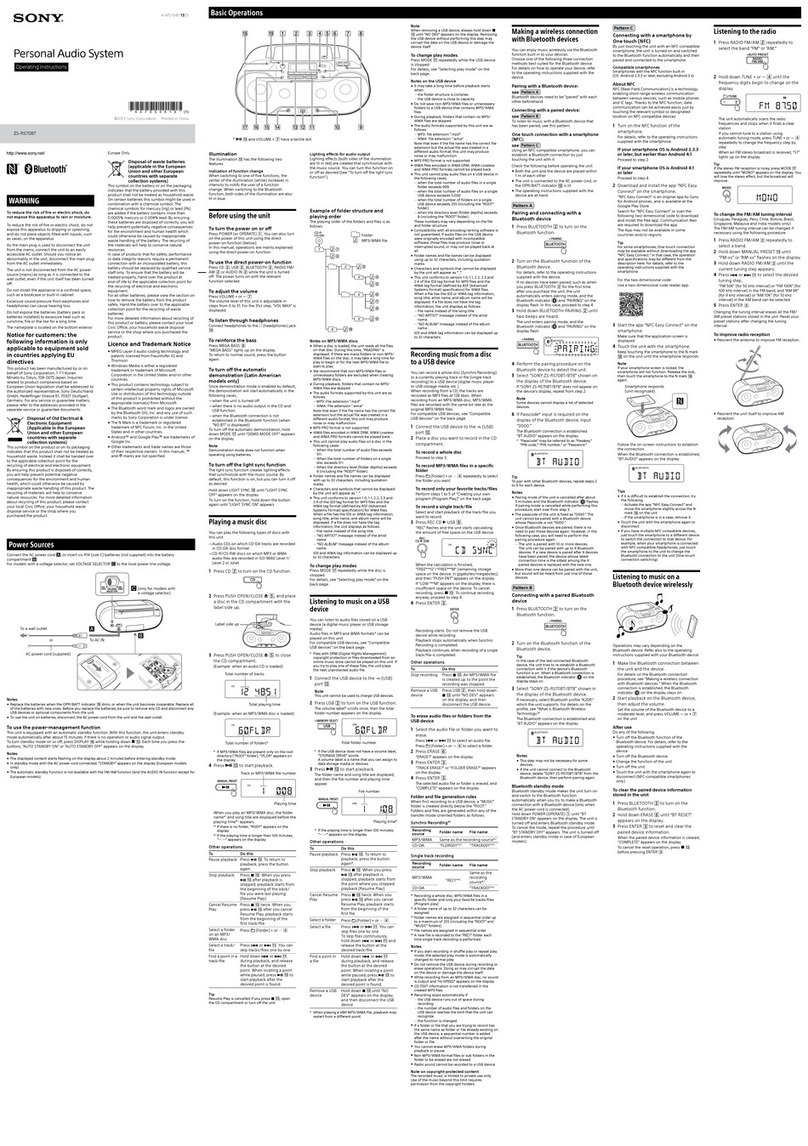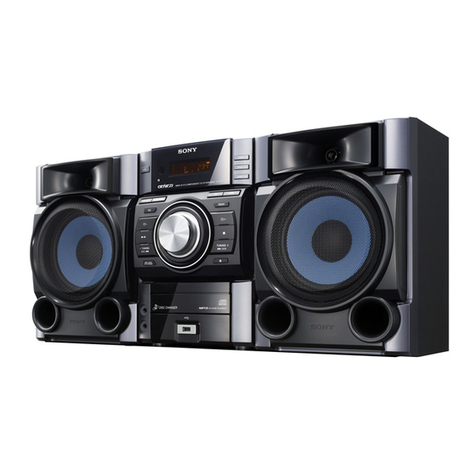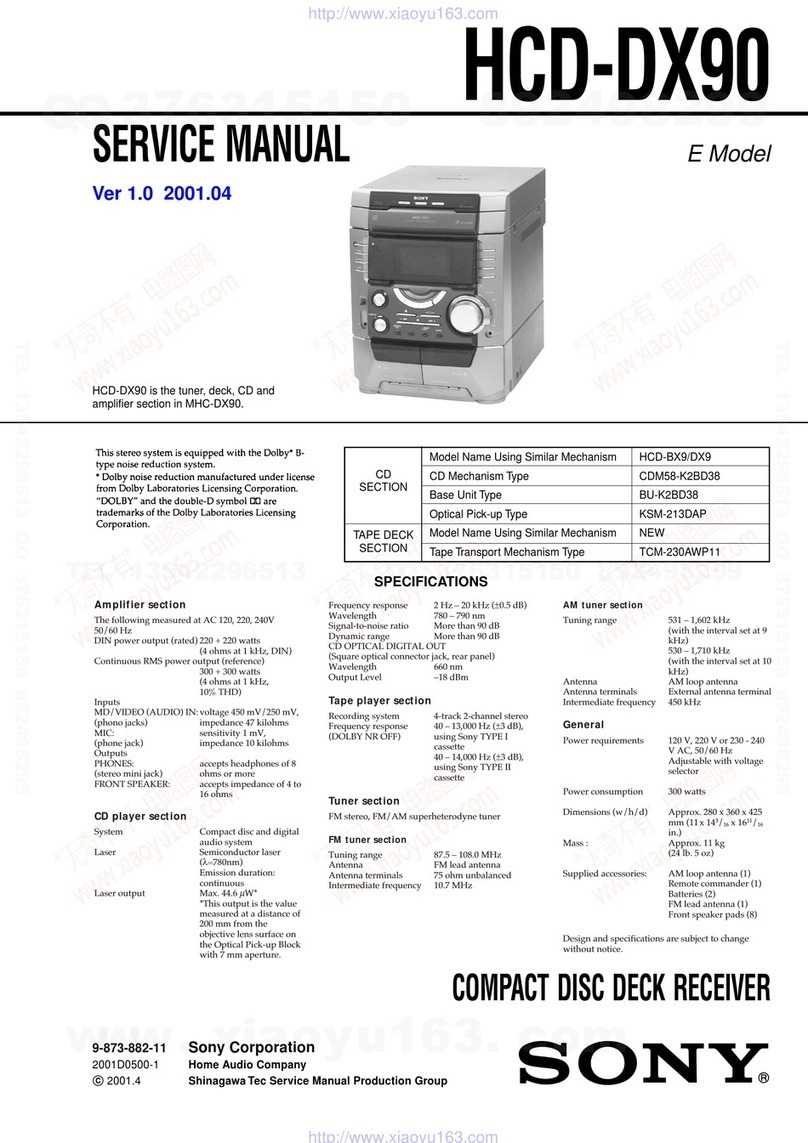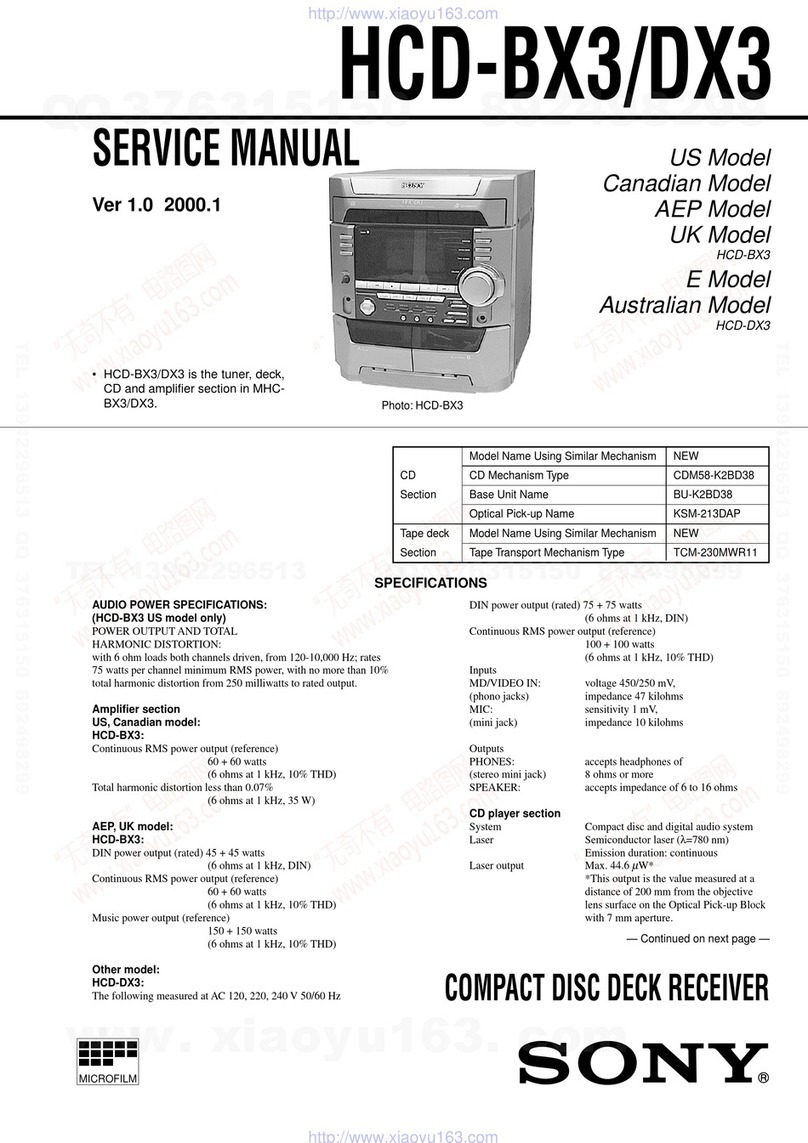TABLE OF CONTENTS
1. GENERAL
Displaying the spectrum analyzer ........................................... 5
Setting the clock ...................................................................... 5
2. DISASSEMBLY
2-1. Side Plate............................................................................. 6
2-2. Cabinet, Rear ....................................................................... 6
2-3. Changer Assy, Front ............................................................ 7
2-4. Key (A) Board, Key (B) Board and LED Board ................. 7
2-5. Display Board ..................................................................... 8
2-6. Cassette Mechanism Deck .................................................. 8
2-7. Main Board and Transformer, Power .................................. 9
2-8. CD Mechanism Deck .......................................................... 9
2-9. Base, Changer ................................................................... 10
2-10. Optical Pick-up ............................................................... 10
3. MECHANICAL ADJUSTMENTS............................... 11
4. ELECTRICAL ADJUSTMENTS
Tape Section .......................................................................... 11
CD Section ............................................................................ 13
5. DIAGRAMS
5-1. Circuit Boards Location .................................................... 15
5-2. Block Diagram –CD Section–........................................... 17
5-3. Block Diagram –Main Section–........................................ 18
5-4. Printed Wiring Board –Main Section–.............................. 19
5-5. Schematic Diagram –Main Section (1/4)–........................ 20
5-6. Schematic Diagram –Main Section (2/4)–........................ 21
5-7. Schematic Diagram –Main Section (3/4)–........................ 22
5-8. Schematic Diagram –Main Section (4/4)–........................ 23
5-9. Schematic Diagram –CD Section–.................................... 24
5-10. Printed Wiring Board –CD Section–................................. 25
5-11. Schematic Diagram –Key Section–................................... 26
5-12. Printed Wiring Board –Key Section–................................ 27
5-13. Schematic Diagram –Display Section–............................. 28
5-14. Printed Wiring Board –Display Section–.......................... 29
5-15. Schematic Diagram –Power Section–............................... 30
5-16. Printed Wiring Board –Power Section–............................ 31
5-17. IC Pin Descrption .............................................................. 32
5-18. IC Block Diagrams............................................................ 33
6. EXPLODEDVIEWS
6-1. Cabinet Section ................................................................. 38
6-2. Front Cabinet Section........................................................ 39
6-3. Rear Cabinet Section......................................................... 40
6-4. Tape Mechanism Deck Section-1 (MF-PHCZ10)............. 41
6-5. Tape Mechanism Deck Section-2 (MF-PHCZ10)............. 42
6-6. CD Changer Section-1 ...................................................... 43
6-7. CD Changer Section-2 ...................................................... 44
6-8. Optical Pick-up Section (KSM-213CCM) ........................ 45
6-9. Speaker Section ................................................................. 46
7. ELECTRICAL PARTS LIST......................................... 47
3
